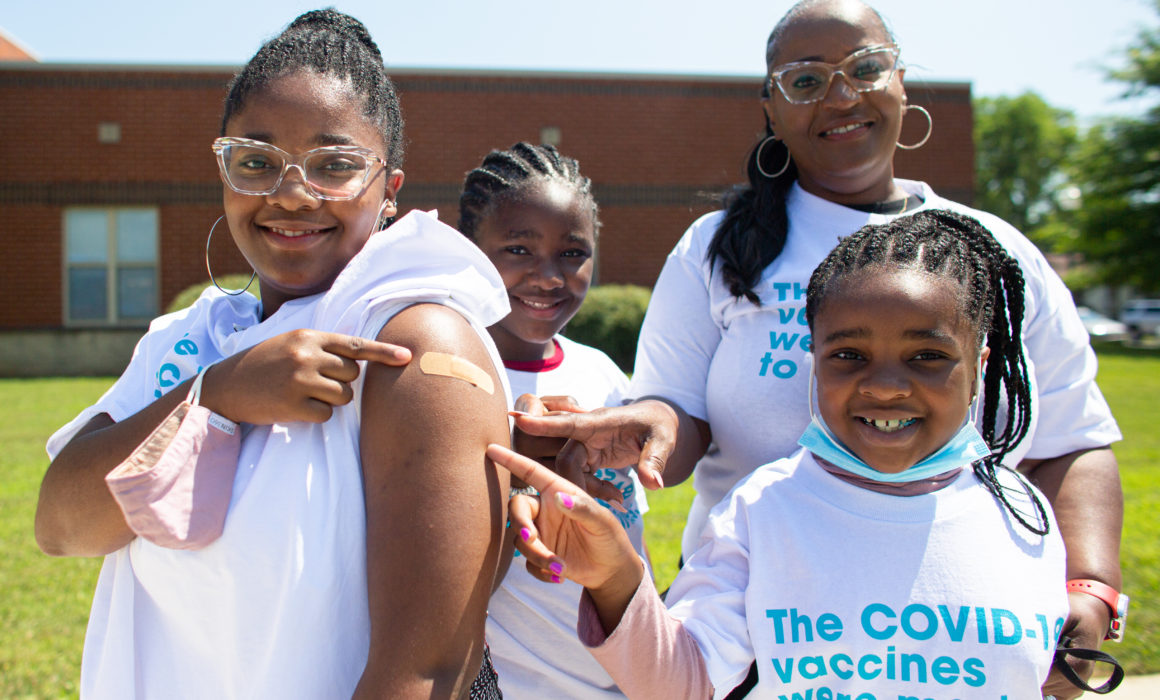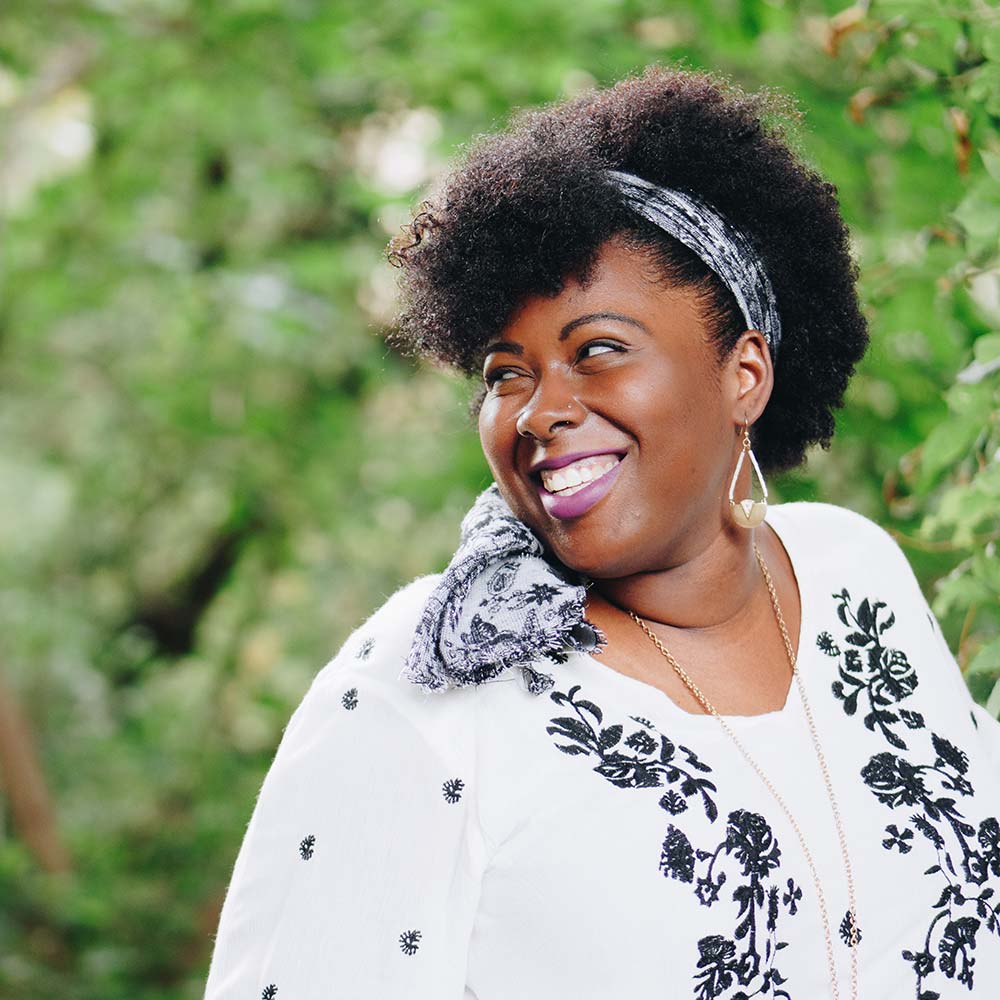Field Report: Challenges & Lessons Learned in Direct Outreach about the COVID-19 Vaccines

The COVID-19 pandemic has been devastating to millions of people, in every corner of American life. Family and friends have mourned the loss of loved ones, workers have been reeling financially from job losses, and children struggled to keep up in a virtual classroom. These impacts have been far-reaching and varied. While the virus itself does not discriminate, our institutions and public response unfortunately do, and the effects have not been felt equally as a result. This is especially true in communities of color, where the death rate is nearly twice that of white people and unemployment rates are 25% higher or more.
But this year brings hope: the COVID-19 vaccines – years in the making– are a groundbreaking achievement, slowing the spread of COVID-19, preventing hospitalization and death, and letting us safely return to the moments with our friends and families that we have all missed the most. The rollout of the vaccines is one of the most ambitious and important public health achievements of a generation, and it is critical that vaccines reach the communities that have been impacted the most.
For these reasons, Civic Nation launched Made to Save, a national grassroots mobilization effort to build trust in the COVID-19 vaccines, ensure equitable access, and increase vaccination rates in communities of color. We know that local organizations are some of the most trusted messengers within their communities, and an equitable vaccine rollout plan must center and empower them to lead. In Spring 2021, we extended millions of dollars of grants, and significant technical assistance, to dozens of grassroots organizations across the country, to support their work.
Our feedback loop, built through frequent discussions with statewide coalitions, data-sharing, and periodic reports from grantees, allows Made to Save to consolidate and lift up on-the-ground feedback on the obstacles to high vaccination rates in the communities served by these organizations; as well as share best practices and tactics that are proving effective.
With the Delta variant adding increased urgency to everyone invested in vaccine equity, this memo lays out some learnings, and touches on the strategic implications as we navigate a landscape of mandates, variants, FDA approval, and potential vaccine boosters.
Among the unvaccinated, confidence in the vaccines is low and demand for information is high.
Consistently, across organizations and communities, we hear that confidence in the vaccine is extremely low. “We underestimated hesitancy” is the first takeaway from an organization in Detroit, a sentiment that is reflected by organizations in Memphis, Jackson, MS, Las Vegas, and others.
“The major hurdle is fear, the mistreatment from health care workers and the past historical history of experimentation.”
—Norman Clement, Founder, Detroit Change Initiative
https://www.youtube.com/watch?v=R9QLkBykhr0
Concerns about potential side effects are very high, and in a number of cases, organizations reported that their staff and volunteers are being asked very specific questions about people’s unique health situation – such as the interaction of a vaccine with medications, or whether a pre-existing condition precludes them from getting vaccinated. There are also high levels of concern that the vaccines were developed too quickly.
Misinformation about the vaccine is also rampant, with a number of organizations reporting that people are expressing fear about the vaccine. In many cases, mistrust of the government plays a large role in people’s concerns. Additionally, many organizations have noted that concerns about immigration status have played heavily into people’s decisions to avoid getting vaccinated and going to the available vaccination sites.
For many, access barriers are preventing vaccination – but it runs deeper than just available vaccines.
Frequently in the broader conversation, “access” is brought up as a potential barrier to the vaccines. However, with appointments readily available and vaccine supply high, concerns of access are sometimes pushed aside or minimized. Our community organizations report high levels of access challenges, and provide a more specific understanding of what those barriers are:
Lack of access to healthcare: Many people have very specific, and valid questions about their own medical situation. Their questions revolve around medications they may be on, or concerns about the vaccine trials’ inclusion of people with specific conditions, or a perhaps false belief that they should not get vaccinated for medical reasons. In many of these cases, the individuals do not have a primary care physician to direct these questions toward.
Language barriers: Our grantees that serve the AAPI community continue to highlight that language barriers are an obstacle to higher vaccination rates. The need for in-language resources is twofold: First, proactively providing information in non-English languages that informs people about the vaccines, their safety and effectiveness, and how to access them; and second, having people and resources available at the vaccine sites themselves that help people feel comfortable and confident when getting vaccinated.
“The most relevant challenges the community is facing and the most common we come across is the lack of access to healthcare. The community has concerns about their health condition in order to get vaccinated, this is creating lack of empowerment for the community to feel confident about taking the vaccine, we see this as a challenge bigger than misinformation.”
—Cecia Alvarado, Mi Familia Vota, Nevada State Director
The Holdouts: Volunteers go door-to-door in Vegas to quell fears about COVID-19 vaccine
“When we go door-to-door, we inform people of the vaccines available at their reach, in their neighborhood.”
By @NewsyJan
Video by @tim_lenard https://t.co/sVZU5vDmik pic.twitter.com/OAC988nA3t— Nevada Independent (@TheNVIndy) August 11, 2021
Limited vaccine sites: While the effort to distribute vaccines has been historic – and in many ways, successful – in its comprehensiveness and reach, we still hear from organizations that the people they serve are struggling to find a vaccine site that is comfortable and accessible to them. In addition to the language barriers cited above, people have cited limited hours, transportation challenges, and the closing down of pop-up sites.
Historically-neglected infrastructure: While less directly tied to vaccine distribution or access, the combination of recent adverse and unusual weather, such as heat waves and flooding, combines with the historically-neglected infrastructure in these communities to create enormous challenges and barriers. Our organizations continue to report that their work is threatened by flooded streets and buildings, power outages, and a lack of air conditioned and otherwise safe spaces during extreme heat waves.
The most successful tactics directly address the specific challenges in a community.
For our community partners, targeted outreach broadly falls into 3 categories: direct outreach, earned & paid media, and facilitation of vaccination clinics. Direct outreach has a broad definition; not only does it include canvassing, phonebanking, and text banking, but also relational outreach between family members or friends, one-on-one conversations with trusted messengers, and outreach to small business owners.
Direct Outreach – Canvassing: Canvassing remains one of the most effective ways to start a conversation encouraging individuals to get vaccinated, particularly in neighborhoods around local vaccine sites. Our grantees have shared specific tactics that have improved the quality of their canvasses:
-
- When some are hesitant to talk about the vaccine, one group is training canvassers to pivot away from COVID-19 until the individual feels comfortable with the conversation.
- Canvassing in high-traffic areas, rather than going door-to-door, often yields more successful conversations in a shorter amount of time. This is particularly effective if the locations are central meeting points for the community, such as a church, community center, or market.
- Multiple grantees are combining door-to-door canvassing with a phone bank before they go into a neighborhood. That way, canvassers adapt their scripts if they already know information about who lives in a household, and residents answer the door ready to talk about vaccines.
- Canvassing in the proximity of a day-of vaccination clinics allows canvassers to pair education with direct access. When a person is ready to get vaccinated, the canvasser can share immediate next steps for going to a nearby vaccine clinic.
Direct Outreach – Relational Organizing: During direct outreach, Made To Save and our grantees are encouraging and working alongside vaccinated community members by making “vaccine tripling” asks, which is asking vaccinated people to commit to talking to three friends or family members about vaccination. In addition, conversations with doctors, or local leaders who look like their audiences serve as a way to talk to the most trusted messengers for those who are still unvaccinated. Last, targeted outreach to small businesses allows our grantees to not only forge relationships with local leaders, but also work with them to give vaccination opportunities and time off for their employees.
“[We’re] utilizing trusted messengers directly from the communities we are serving to encourage family, friends and neighbors to get vaccinated and educate them enough to have hard and uncomfortable conversations.”
—Carolyn Foster, Faith in Community Coordinator, Greater Birmingham Ministries
Paid Media: A grantee in Detroit has seen a lot of success running Google Ads in the area. With less than $6k spent over the course of a month and a half, they were able to generate almost 75k impressions (8¢/impression) and over 5k clicks ($1.18/click). Some top performing keywords include “vaccine appointments” and “vaccine locations”.
Vaccination Clinics: Most of our grantees have found partnering with vaccine clinics to be a way to both recruit their communities to attend clinics, as well as drive the conversation around where the vaccine clinics need to be in order to best serve the community. In-language outreach through WeChat served the Asian American community in Philadelphia to best recruit for clinics. Grantees also pushed for clinics at existing community events to minimize the need for clinic specific recruitment.
Conclusion
As trusted messengers with deep ties to their communities, the community groups we’ve invested in are the best-equipped to identify and address the challenges that their neighbors are facing. However, they are being asked to adapt to a challenging and changing environment, and they are confronting deep mistrust and the impacts of historical, structural racism and prejudice in their local healthcare systems, alongside a large population of people that lack a “medical home” to answer personal questions about their health and the COVID-19 vaccines. We should not overestimate the ability of COVID-19 to outweigh long-standing distrust in government or the medical system.
In response to this feedback, Made to Save will double down on our investments in grassroots outreach, and refine our strategic approach to integrate these lessons learned: Based on our knowledge of low confidence in vaccines and the need for information, we will continue to prioritize community organizations in their roles as trusted messengers for vaccine conversations. We will continue to centralize, synthesize, and distribute these learnings and best practices, and consider more targeted support to address the unique challenges our partners are facing.
